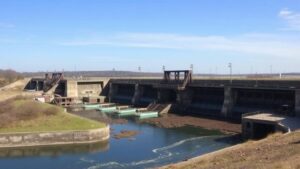Exploring AI-Powered Tools for Identifying Geological Anomalies Suggesting Rich Deposits
Exploring AI-Powered Tools for Identifying Geological Anomalies Suggesting Rich Deposits
In recent years, the integration of artificial intelligence (AI) into geological exploration has transformed how researchers and mining companies identify potential resource-rich deposits. Traditional methods of geological surveying can be time-consuming and labor-intensive, often yielding inconclusive results. But, AI-powered tools are revolutionizing the field by enhancing accuracy and efficiency in anomaly detection.
Understanding Geological Anomalies
Geological anomalies refer to abnormal features in the earths crust that deviate from established norms regarding mineral composition, rock formation, and landscape configurations. e anomalies often indicate the presence of valuable deposits of minerals such as gold, silver, copper, and rare earth elements. Identifying these anomalies is crucial for resource exploration and has significant economic implications for various industries.
The Role of Artificial Intelligence
Artificial intelligence provides sophisticated algorithms capable of analyzing vast datasets collected from geological surveys, remote sensing, and geophysical measurements. Machine learning, a subset of AI, is particularly effective in pattern recognition, enabling the identification of anomalies that might elude traditional analytical techniques.
AI Techniques in Geological Analysis
Various AI techniques are employed in geological analysis, including:
- Machine Learning: Algorithms learn from existing data to predict the likelihood of mineral deposits based on specific geological patterns.
- Deep Learning: Advanced neural networks that process large amounts of unstructured data, such as satellite imagery, to detect anomalies indicative of mineralization.
Case Studies and Real-World Applications
Several successful applications of AI in geological exploration demonstrate its significant potential:
- Gold Exploration in Western Australia: In a project by Goldspot Discoveries Corp., machine learning algorithms analyzed geological datasets, ultimately identifying promising exploration targets that increased discovery rates by over 30% compared to traditional methods.
- Mineral Resource Mapping in the Canadian Arctic: Using AI algorithms, researchers at the University of Alberta synthesized geophysical data and remotely sensed imagery to successfully locate previously unknown mineral deposits, leading to further exploration initiatives in the region.
Benefits of AI-Powered Tools
The benefits of employing AI-powered tools in geological anomaly detection include:
- Increased Efficiency: Automation of data analysis reduces the time required to identify potential deposits, allowing for faster decision-making in exploration.
- Cost-Effectiveness: Minimizing labor-intensive fieldwork and focusing resources on the most promising targets can significantly lower operational costs.
- Enhanced Accuracy: AI algorithms reduce human error and biases, providing more reliable predictions of where to explore.
Challenges and Considerations
Despite its advantages, integrating AI into geological exploration presents challenges:
- Data Quality: The effectiveness of AI models relies heavily on high-quality input data. Inaccurate or insufficient datasets can lead to misleading conclusions.
- Interpretation of Results: Geoscientists must carefully interpret the outputs generated by AI to ensure appropriate exploration strategies are developed.
The Future of AI in Geological Exploration
As technology advances, the role of artificial intelligence in identifying geological anomalies is expected to expand. Ongoing developments in data collection methods, such as the use of drones and enhanced sensors, will provide richer datasets for machine learning algorithms. The increasing availability of cloud computing resources will also facilitate the processing of larger amounts of geological data.
Conclusion
The exploration of AI-powered tools for identifying geological anomalies suggests a promising future for mineral exploration. By blending traditional geological expertise with cutting-edge technology, land and resource managers can optimize exploration strategies and improve the chances of discovering valuable deposits. Embracing these advancements can lead to more sustainable resource development, benefitting both industry stakeholders and society as a whole.


